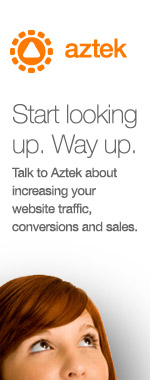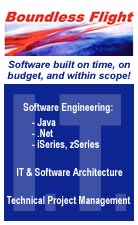The title provides a short answer to the question: Why do we integrate with Google Apps? An important emerging theme in cloud applications is the one-page, or to be more accurate, the one-browser-tab approach to design—i.e. contextual integration of information across applications, so that whichever app the user happens to be in, it pulls relevant information from other apps and displays it in the right context. In the traditional desktop and client-server world, data is slave to the application that created it. In the cloud, data is liberated so it can contextually go where it is the best fit. We have used this as our architectural blueprint in Zoho as we integrate Zoho services with each other (such as our CRM and email integration) as well as in integrating Zoho with third parties. Take the Google Apps Marketplace announcement yesterday. At that event, there were plenty of demonstrations on how contextual integration works across vendors. Notable ones include Intuit Online Payroll integration with Google Calendar, Atlassian JIRA.com integration with Gmail/Docs/GTalk, and of course, our own Zoho CRM and Zoho Projects integration with Gmail/Docs. It is fair to say that every single case of integration demonstrated at the launch event yesterday takes the cloud-based ecosystem functionality ahead of where traditional enterprise systems are capable of today. Even more important, we completed our integration with Google in less than two months, even while they were still refining their APIs. We thank the Google team once again for inviting us to be a launch partner. Why do we want to integrate with Google Apps? The most important browser tab, in a business context, is the one dedicated to email. Given that Gmail is the cloud email provider of choice by far, it is natural for Zoho to integrate our suite with Gmail and Google Apps. While we agree with Marc Benioff on enterprise apps taking design inspiration from Facebook (well, not too much inspiration, we are not sure we want to go around “poking” our customers!), we would also like to point out that email is where the majority of business users spend their time. Of course, given that Salesforce has no email strategy, it is natural for them to try to redefine the market away from email and towards social networking. This is Salesforce’s third attempt at making their CRM a business app platform, but unfortunately for them, email is a far more natural starting point than CRM—we say that as a company that has a strong CRM suite. Besides, to be a real platform, you have to have a degree of openness, and our experience with Salesforce demonstrates the opposite and sets up a direct contrast to Google’s platform approach. Now, what exactly is contextual integration? In a nutshell, contextual integration allows for the most relevant information to surface up to the user, regardless of where that information is stored. For years, if you wanted to get information on customers, you had to go to our CRM system. If you wanted to get information on employees, you had to go to your HRIS system; if you wanted to read email, you went to your email client. The cloud is going to fundamentally change that. With contextual integration, everything comes together—emails, calendars, documents, CRM systems, project management, HR, accounting, all of it—all from within one single tab. In this new vision, application boundaries become fluid, in fact applications in the traditional sense take the back seat, and the user’s workflow and context dominate. The benefits are enormous, both for individual business users as well as for IT organizations. Individual users can get more done faster, with tools that get out of their way. IT organizations reap enormous productivity gains in systems integration. That second point, systems integration, is an important one. The vast majority of IT spending goes to systems integration/professional services. It is well known in the industry that in the old software model, licensing costs represent only 20-30 percent of the initial cost. But in the SaaS world, we are already seeing how much easier it is to share data among different, disparate systems. This, of course, doesn’t mean that system integration costs will entirely go away. In particular, enterprise customers will still need to hire professional services to connect cloud services to their more intricate, legacy systems they still have in-house. While they might not go away, we fully expect them to substantially decrease. Small and mid-size customers will even be able to do away with them, as cloud vendors are increasingly pre-integrating each other’s systems. I will acknowledge that contextual integration is still in its infancy, but we (by which I mean the entire cloud ecosystem) are making rapid progress. The important thing to note about cloud applications is that, in the beginning, they were just about replicating the desktop experience. Want an email program? I’ll give you one, but instead of on a desktop client, on the web. That was step one. Step two was about improving some of the features that the desktop application provided: more storage, better scalability, better security, etc. But now cloud applications go far beyond that. Contextual integration is an example of how cloud applications—Zoho’s and everyone else’s—are bringing a whole new wave of productivity and innovation.
Sridhar Vembu is CEO of ZOHO Corp. Learn more about Zoho, a comprehensive suite of award-winning online productivity, collaboration and business applications for small and medium-sized businesses, as well as consumers, at http://www.zoho.com and the Zoho blog, http://blogs.zoho.com/. Follow the company on Twitter at @zoho.
Top of Page
Back to Great Lakes Geek Columnists
| 

